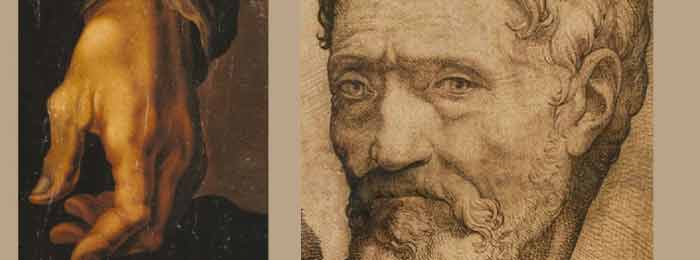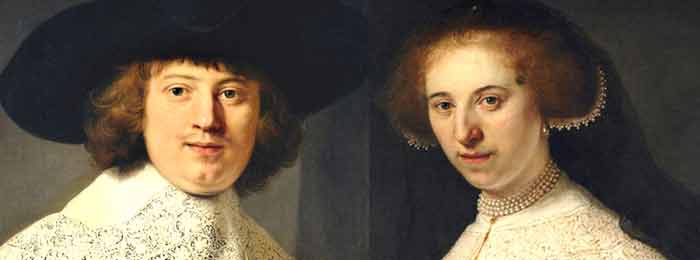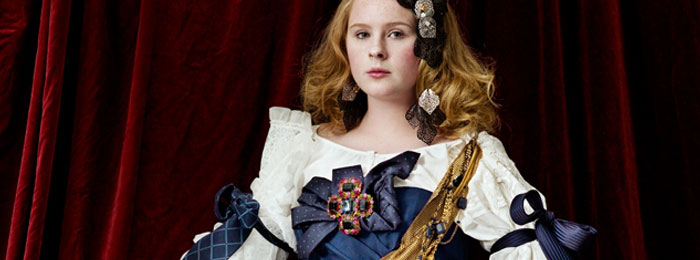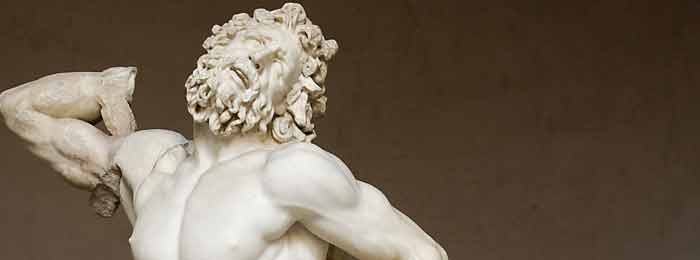On 7 Feb, 2016 With
… Letters written by the artist suggest his hand symptoms appeared late in life.
According to a letter written to his nephew in 1552, they caused him great discomfort.
Nevertheless he continued to create one masterpiece after another and was seen hammering only a few days before his death in 1564, three weeks before his 89th birthday.
By then, he was unable to write, and could only sign his letters. …
Read More
On 1 Feb, 2016 With
France and the Netherlands signed a historic deal on Monday acquiring two large Rembrandt portraits for €160 million ($174 million), the French culture ministry announced.
He added it was a new concept in the museum world for two countries to work together to obtain works from a private collection.
In 1634, the year Rembrandt completed the portraits of Maerten Soolmans and Oopjen Coppit, he was, at the age of only 28, the most fashionable portrait painter in Amsterdam.
These portraits are among the grandest he ever painted —lasting tributes to the status of his sitters and the importance of their patronage to the young artist. …
Read More
On 9 Jan, 2016 With
Photographer Josef Fischnaller shoots portraits that recreate famous paintings by the Old Masters, often including some humorous modern day elements in the scene. To Your Creative Success, Natalie Richy and Vladimir London Web Art Academy Founders
Read More
On 1 Jan, 2016 With
Caravaggio’s crimes exposed in Rome’s police files Michelangelo Merisi, aka Caravaggio, was notoriously bad-tempered and violent, constantly getting into physical altercations, confident that his moneyed patrons would fish him out of scrape after scrape. They mainly did, as it happened, and when they didn’t, he just skipped town for a while until the heat was off him. The stories about him have become part of his legend — the bad boy artist who lived fast, died young and left a sunstroked/syphilitic/stabbed/lead poisoned corpse — and it’s difficult to tell fact from gossip. Rome’s State Archives contain a myriad primary documents detailing Caravaggio’s many brushes with the law (among other information about his life and work) but until recently they were on…
Read More
On 4 Oct, 2015 With
What the Old Masters knew about Anatomy Laocoon and the Apollo Belvedere – nothing had ever been seen to equal the honours with which these statues were surrounded. Brought out of the earth, they were transported through the towns and escorted by a stately cortege to the places they were to occupy in the palaces of the Pope or the Duke. The court of Lorenzo the Magnificent, at Florence, Brought together a great many of the humanists and artists of the time and from their daily contact a revival of Greek Culture took place. Artists began to perceive, that the Grecian sculptures possessed an even deeper significance than they had heretofore found in them. They saw that these works represented…
Read More
On 31 Aug, 2015 With
Rembrandt, who is thought to have learned from Jacob van Swanenburgh and Pieter Lastmann, no doubt took stylistic cues from the Flemish Technique, the Venetian Technique, and the Direct Painting Technique. When observing his work, one can see that he experimented freely with them, moving between them, but he most certainly employed them all. Over time, as he learned each method, he incorporated aspects from all into a his style—while, of course, adding innovations of his own. Some of his paintings utilize wood as a canvas, as was common with the Flemish Technique, which he appears to have used predominantly in those works. In addition to this, a few of his small studies on wood panels seem to have utilized…
Read More
On 23 Aug, 2015 With
How to paint in style of Raphael The Three Graces is an oil painting by Italian painter Raphael, housed in the Musée Condé of Chantilly, France. The date of origin has not been positively determined, though it seems to have been painted at some point after his arrival to study with Pietro Perugino in about 1500, possibly 1503-1505. According to James Patrick in 2007’s Renaissance and Reformation, the painting represents the first time that Raphael had depicted the nude female form in front and back views. The Three Graces is an oil painting by Italian painter Raphael. The date of origin has not been positively determined, though it seems to have been painted at some point after his arrival to…
Read More
On 18 Aug, 2015 With
Venetian Painting Techniques The painting techniques employed by Northern Renaissance artists strongly influenced the work of renowned painters, such as Titian and Giorgione, during the Italian Renaissance. Venetian artists also greatly impacted the styles of this period, notably the Van Eyck brothers. The oil painting techniques developed by these Flemish painters around the year 1400 combined the use of egg tempera and oil painting, with the underpainting being created using a grisaille technique of tempera, while pure colored oil glazes were carefully applied on top. This combination painting technique added remarkable lustre to their small panel paintings, resulting in striking jewel-tones, the most vivid hallmark of the brothers’ famous style. Prior to the Van Eyck brothers’ success with their combination…
Read More
On 9 Aug, 2015 With
Whistler’s Oil Painting Technique Whistler’s approach to portraiture in his late maturity was described by one of his sitters, Arthur J. Eddy, who posed for the artist in 1894: “He worked with great rapidity and long hours, but he used his colours thin and covered the canvas with innumerable coats of paint. The colours increased in depth and intensity as the work progressed. At first the entire figure was painted in greyish-brown tones, with very little flesh colour, the whole blending perfectly with the greyish-brown of the prepared canvas; then the entire background would be intensified a little; then the figure made a little stronger; then the background, and so on from day to day and week to week, and…
Read More
On 26 Jul, 2015 With
TITIAN’S WORKS.Copies or Originals? The works of Titian, though many of his greatest productions have been destroyed by terrible conflagrations at Venice and Madrid, are numerous, scattered throughout Europe, in all the royal collections, and the most celebrated public galleries, particularly at Venice, Rome, Bologna, Milan, Florence, Vienna, Dresden, Paris, London, and Madrid. The most numerous are portraits, Madonnas, Magdalens, Bacchanals, Venuses, and other mythological subjects, some of which are extremely voluptuous. Two of his grandest and most celebrated works are the Last Supper in the Escurial, and Christ crowned with Thorns at Milan. It is said that the works of Titian, to be appreciated, should be seen at Venice or Madrid, as many claimed to be genuine elsewhere are…
Read More











